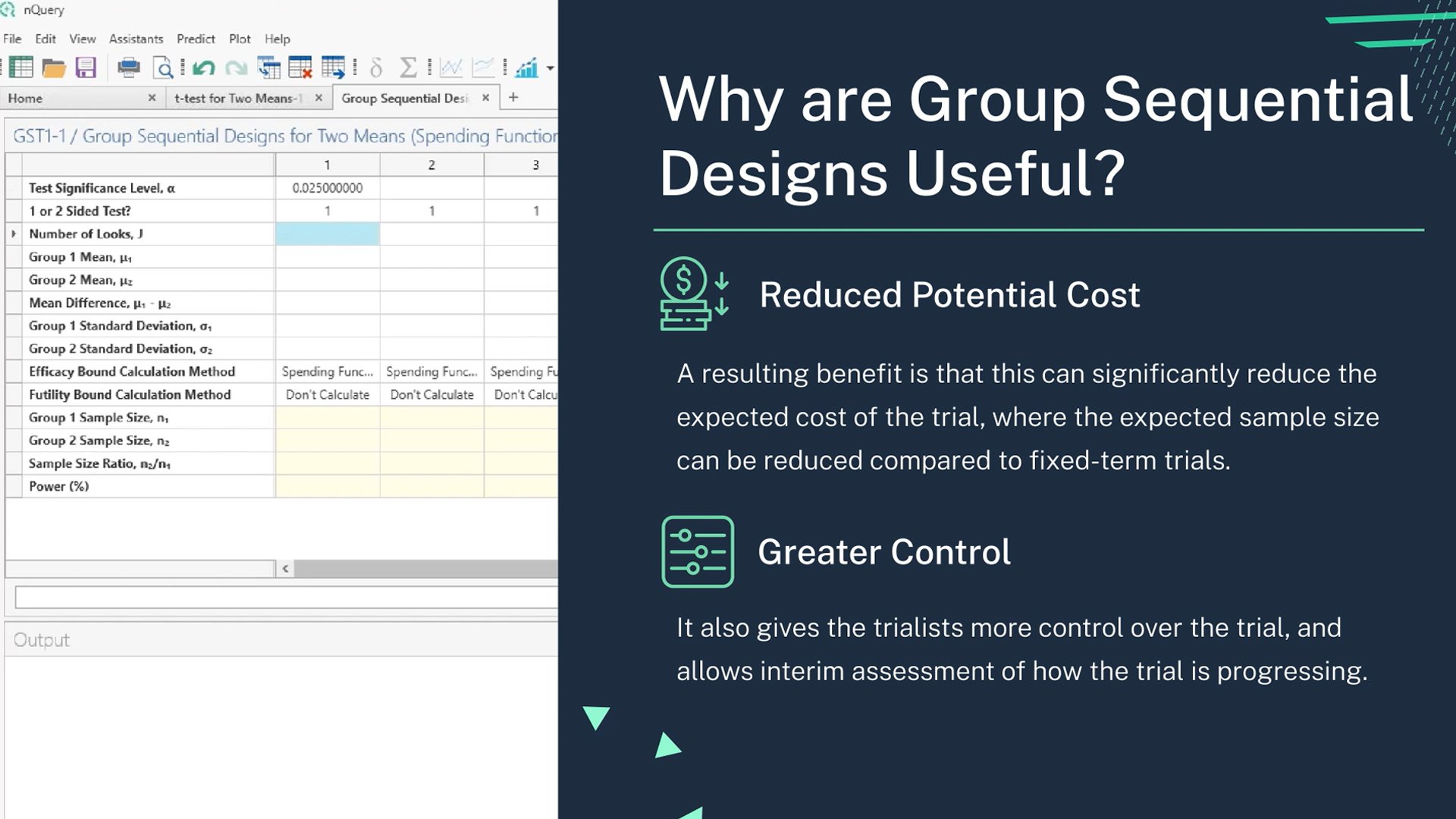Statistical Power from First Principles
Free Webinar
Statistical Power from First Principles
In this free webinar, Ronan Fitzpatrick, Lead Statistician at nQuery, breaks down statistical power from first principles, how it ties into planning the size of clinical trials and the various approaches available to find the power for a given design
Learning objective of this webinar:
In this webinar, Ronan has examined statistical power—the cornerstone of clinical trial design—by breaking it down from foundational principles. You will gain a clear understanding of why power matters, how it influences trial planning, and the strengths/limitations of different power calculation methods.
Four key areas are covered:
-
The Fundamentals of Statistical Power
-
Why power is critical for robust clinical trial design
-
The link between power, Type I/II errors, and sample size
-
Common misconceptions and pitfalls in power analysis
-
-
Power in Trial Planning
-
How power drives decision-making in hypothesis testing
-
Balancing power with practical constraints (budget, timelines, feasibility)
-
Case examples: Underpowered vs. optimally designed trials
-
-
Three Approaches to Power Calculation
-
Approximate Methods
Quick, formula-based estimates using normal approximations
When to use them—and their limitations -
Exact Methods
Precise power under parametric assumptions (e.g., t-tests, binomial tests)
Trade-offs between accuracy and computational complexity -
Simulation-Based Methods
Monte Carlo techniques for complex or non-standard designs
Flexibility to model real-world variability and adaptive designs
-
-
Choosing the Right Approach
-
Comparing methods: Accuracy, ease of use, and applicability
-
Practical guidance for selecting the best method for your study
-
Why Is Statistical Power the Cornerstone of Clinical Trial Design?
Statistical power is the most common approach to study planning in clinical trials. But what is statistical power and why is it so important? Statistical power is tied to making appropriate decisions in a trial and ensuring a trial is adequately sized to answer the question(s) of interest.
Power is most widely used (though not exclusively!) in the context of hypothesis testing where it is often used to define the appropriate sample size for a trial. In hypothesis testing, power corresponds to the Type II error (where we fail to reject the null when we should) rather than the more widely discussed Type I error (where we reject the null when we should not) associated with the significance level of the test. The higher the sample size, the higher the power (usually!) and therefore the better the chance of finding our effect of interest if it exists.
However, there are several statistical approaches to calculating the power: approximate, exact and simulation. Approximate methods provide reasonable estimates of the power based on approaches such as formulae based on the normal approximation.
Exact methods provide the exact power under a given set of parametric assumptions. Simulation uses Monte Carlo simulation to generate data under a specific alternative and verify power empirically. These methods all have their own strengths and weaknesses which also illuminate the overall value but also drawbacks of power analysis.
Approximate, Exact and Simulation-Based Approaches for Robust Trial Design
How Does Inadequate Power Jeopardize Clinical Research?
Statistical power serves as the cornerstone of reliable clinical trial design, determining a study's ability to detect true treatment effects when they exist. Despite its fundamental importance, studies frequently suffer from inadequate power, compromising their ability to draw meaningful conclusions. This webinar provides a comprehensive examination of power analysis, from foundational concepts to practical implementation, equipping researchers with the tools to design studies that balance statistical rigor with real-world constraints.
What Are the Key Fundamentals of Power Analysis?
Statistical power represents more than just achieving an arbitrary 80% threshold—it embodies the relationship between sample size, effect size, and the probability of correctly rejecting a false null hypothesis. The consequences of inadequate power extend beyond statistical significance, potentially leading to costly trial failures or missed therapeutic opportunities. Equally important is understanding how Type II errors differ from their more frequently discussed Type I counterparts, and why both demand careful consideration during study planning.
How Do Exact and Simulation Methods Improve Power Accuracy?
Researchers can select from three primary approaches to power analysis, each with distinct advantages and appropriate applications. Approximate methods offer rapid, formula-based estimates suitable for preliminary assessments, though they rely on assumptions that may not hold in complex scenarios. Exact methods provide precise power calculations under specific parametric conditions, delivering accuracy at the cost of computational intensity. Simulation-based approaches, utilizing Monte Carlo techniques, offer unparalleled flexibility for novel designs or non-standard endpoints, generating empirical power estimates through repeated sampling.
How Can Adaptive Designs Enhance Statistical Power?
Contemporary clinical research increasingly demands adaptive approaches to power analysis. Interim assessments allow researchers to evaluate accumulating data while maintaining trial integrity, though they require specialized techniques to control error rates. Sample size re-estimation methods enable mid-study adjustments based on emerging variance estimates, particularly valuable when working with uncertain parameters. These advanced techniques find particular relevance in regulatory submissions, where demonstrating appropriate power considerations can significantly impact a trial's success.
What’s Next in Statistical Power Methodologies?
The field continues to evolve with advancements in computational power and statistical methodology. Modern software solutions now integrate multiple power calculation approaches, allowing researchers to compare methods and validate assumptions. Emerging hybrid methodologies blend frequentist and Bayesian frameworks, offering new possibilities for dynamic power analysis. Practical case studies demonstrate how these techniques resolve common challenges in trial design across therapeutic areas and development phases.
Whether designing a new study or evaluating an existing protocol, this webinar will provide you with will leave with practical tools to enhance their trial design capabilities. You will gain a structured framework for selecting and applying power analysis methods appropriate to their specific study requirements. The presentation includes real-world examples illustrating successful power optimization strategies, common pitfalls, and regulatory considerations.
About nQuery
nQuery helps make your clinical trials faster, less costly and more successful.
It is an end-to-end platform covering Frequentist, Bayesian, and Adaptive designs with 1000+ sample size procedures.
nQuery Solutions
Sample Size & Power Calculations
Calculate for a Variety of frequentist and Bayesian Design
Who is this for?
This will be highly beneficial if you're a biostatistician, scientist, or clinical trial professional that is involved in sample size calculation and the optimization of clinical trials in:
- Pharma and Biotech
- CROs
- Med Device
- Research Institutes
- Regulatory Bodies














